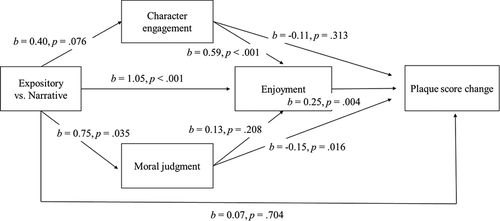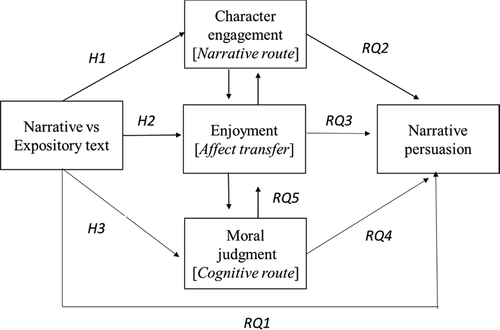Figures & data
Table 1. Sample size, age, and gender distribution at the first measurement (T1), second measurement (T2), and third measurement (T3) in the total sample and the two experimental groups
Table 2. Brief summary of session at the three time points of assessment
Table 3. Descriptives in the story and expository conditions. Mean and standard deviation (in brackets). P values of independent sample t-tests indicate if there was a significant difference between conditions in the output variables
Table 4. Descriptives of output variables across time. F statistics indicates the interaction effect of condition and time on the dependent variable
Table 5. Results of Mediation Model (Model 6, Hayes, Citation2013). Partially standardized indirect effect(s)
Figure 2. Mediation analysis with conditions as predictor, plaque score change as dependent variable, age as covariate, and character engagement, child’s enjoyment and moral judgment of the protagonist as mediator variables. A bootstrap method with 10,000 resample was used, bootstrapped intervals are reported for indirect effects


